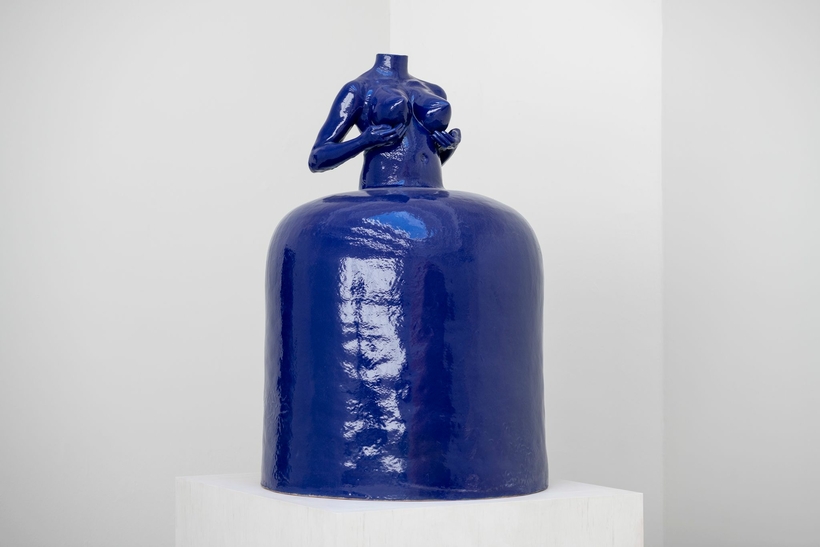Long before she became America’s first Black female representative at the 2022 Venice Biennale, the sculptor Simone Leigh was accustomed to pushing boundaries. Even as a young artist in Brooklyn, Leigh has said, she knew she was “making important work.” Finding affinity with Black theorists like Saidiya Hartman, who bridges theory and narrative, and the poet Dionne Brand, Leigh creates formidable shapes that convey complex interior lives. This Thursday, at the Institute of Contemporary Art, Boston, the first comprehensive museum survey of Leigh’s momentous work goes on view.

Born in 1967 to Jamaican missionaries, Leigh frequently rebelled against the austere belief system that she was brought up with on Chicago’s South Side. Escaping to Earlham College, a Quaker school in Indiana, she plunged into feminist theory and began expressing her ideas through clay. Leigh’s female forms—often combined with elements of African art, architecture, and ritual—lend cultural centrality to women and femmes across the African diaspora, and discourses both postcolonial and sociopolitical are alive in her art. Indeed, Leigh’s largest sculptures can read like wordless manifestos. In 2018, she started casting them in bronze.
At the ICA, Boston, pieces from Leigh’s U.S. Pavilion at the 59th Venice Biennale will be on display in America for the first time. Illuminating the breadth of her practice are 40 works of installation, ceramics, video, and bronze. Accompanied by a catalogue that features newly commissioned explorations of race, womanhood, and sovereignty from over 15 leading scholars, the exhibition includes breathtakingly scaled pieces—for instance, the 24-foot-tall Satellite (2022). It not only evokes the magnitude of Black female identity, but also the space Leigh herself occupies in the contemporary art world.
Nyla Gilstrap is a Chicago-based writer
“Simone Leigh” will be on at the Institute of Contemporary Art, Boston beginning April 6
